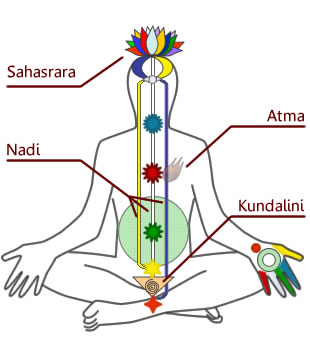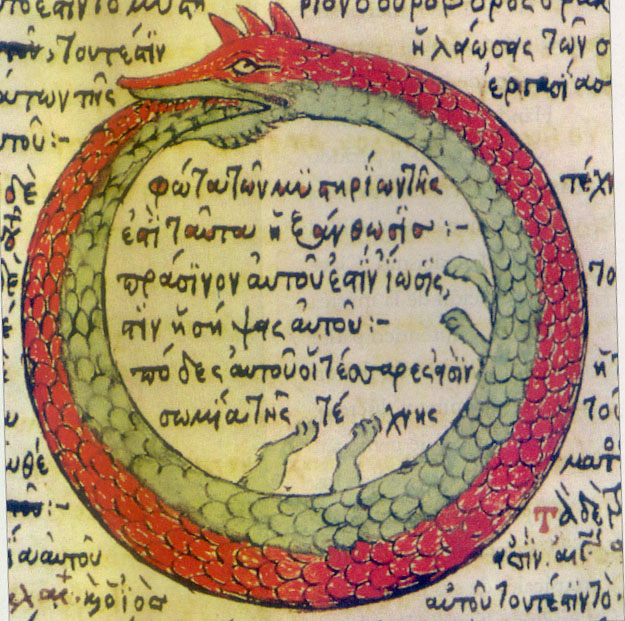|
Serpent Symbolism
The serpent, or snake, is one of the oldest and most widespread mythological symbols. The word is derived from Latin ''serpens'', a crawling animal or snake. Snakes have been associated with some of the oldest rituals known to mankind and represent dual expression of good and evil. In some cultures, snakes were fertility symbols. For example, the Hopi people of North America performed an annual snake dance to celebrate the union of Snake Youth (a Sky spirit) and Snake Girl (an Underworld spirit) and to renew the fertility of Nature. During the dance, live snakes were handled, and at the end of the dance the snakes were released into the fields to guarantee good crops. "The snake dance is a prayer to the spirits of the clouds, the thunder and the lightning, that the rain may fall on the growing crops." To the Hopi, snakes symbolized the umbilical cord, joining all humans to Mother Earth. The Great Goddess often had snakes as her familiars—sometimes twining around her sacred staff ... [...More Info...] [...Related Items...] OR: [Wikipedia] [Google] [Baidu] |
Snake
Snakes are elongated, limbless, carnivorous reptiles of the suborder Serpentes . Like all other squamates, snakes are ectothermic, amniote vertebrates covered in overlapping scales. Many species of snakes have skulls with several more joints than their lizard ancestors, enabling them to swallow prey much larger than their heads ( cranial kinesis). To accommodate their narrow bodies, snakes' paired organs (such as kidneys) appear one in front of the other instead of side by side, and most have only one functional lung. Some species retain a pelvic girdle with a pair of vestigial claws on either side of the cloaca. Lizards have evolved elongate bodies without limbs or with greatly reduced limbs about twenty-five times independently via convergent evolution, leading to many lineages of legless lizards. These resemble snakes, but several common groups of legless lizards have eyelids and external ears, which snakes lack, although this rule is not universal (see Amphisbae ... [...More Info...] [...Related Items...] OR: [Wikipedia] [Google] [Baidu] |
Kundalini
In Hinduism, Kundalini ( sa, कुण्डलिनी, translit=kuṇḍalinī, translit-std=IAST, lit=coiled snake, ) is a form of divine feminine Energy (esotericism), energy (or ''Shakti'') believed to be located at the base of the spine, in the ''Muladhara (Root Chakra), muladhara''. It is an important concept in Shaivism#Grihastha and Sannyasi Shaiva: Mantramarga, Śhaiva Tantra, where it is believed to be a force or power associated with the Devi, divine feminine or the formless aspect of the Goddess. This energy in the body, when cultivated and awakened through Tantra, tantric practice, is believed to lead to Moksha, spiritual liberation. Kuṇḍalinī is associated with Parvati or Adi Parashakti, the supreme being in Shaktism; and with the goddesses Bhairavi and Kubjika. The term, along with practices associated with it, was adopted into Hatha yoga in the 9th century. It has since then been adopted into other forms of Hinduism as well as modern spirituality and New A ... [...More Info...] [...Related Items...] OR: [Wikipedia] [Google] [Baidu] |
Hinduism
Hinduism () is an Indian religion or ''dharma'', a religious and universal order or way of life by which followers abide. As a religion, it is the world's third-largest, with over 1.2–1.35 billion followers, or 15–16% of the global population, known as Hindus. The word ''Hindu'' is an exonym, and while Hinduism has been called the oldest religion in the world, many practitioners refer to their religion as '' Sanātana Dharma'' ( sa, सनातन धर्म, lit='the Eternal Dharma'), a modern usage, which refers to the idea that its origins lie beyond human history, as revealed in the Hindu texts. Another endonym is ''Vaidika dharma'', the dharma related to the Vedas. Hinduism is a diverse system of thought marked by a range of philosophies and shared concepts, rituals, cosmological systems, pilgrimage sites, and shared textual sources that discuss theology, metaphysics, mythology, Vedic yajna, yoga, agamic rituals, and temple building, among other topi ... [...More Info...] [...Related Items...] OR: [Wikipedia] [Google] [Baidu] |
Serpent In The Bible
Serpents ( he, נָחָשׁ, translit=''nāḥāš'') are referred to in both the Hebrew Bible and the New Testament. The symbol of a serpent or snake played important roles in the religious traditions and cultural life of ancient Greece, Egypt, Mesopotamia, and Canaan. The serpent was a symbol of evil power and chaos from the underworld as well as a symbol of fertility, life, healing, and rebirth. ''Nāḥāš'' (), Hebrew for "snake", is also associated with divination, including the verb form meaning "to practice divination or fortune-telling". ''Nāḥāš'' occurs in the Torah to identify the serpent in the Garden of Eden. Throughout the Hebrew Bible, it is also used in conjunction with ''seraph'' to describe vicious serpents in the wilderness. The ''tannin'', a dragon monster, also occurs throughout the Hebrew Bible. In the Book of Exodus, the staves of Moses and Aaron are turned into serpents, a ''nāḥāš'' for Moses, a ''tannin'' for Aaron. In the New Testament, th ... [...More Info...] [...Related Items...] OR: [Wikipedia] [Google] [Baidu] |
Midrash
''Midrash'' (;"midrash" ''Random House Webster's Unabridged Dictionary''. he, מִדְרָשׁ; or מִדְרָשׁוֹת ''midrashot'') is expansive Biblical exegesis using a rabbinic mode of interpretation prominent in the . The word itself means "textual interpretation", "study", or " exegesis", derived from the root verb (), which means "resort to, seek, seek ... [...More Info...] [...Related Items...] OR: [Wikipedia] [Google] [Baidu] |
Sexual Desire
Sexual desire is an emotion and motivational state characterized by an interest in sexual objects or activities, or by a drive to seek out sexual objects or to engage in sexual activities. It is an aspect of sexuality, which varies significantly from one person to another and also fluctuates depending on circumstances. It may be the single most common sexual event in human life. However, not every person experiences sexual desire; those who do not may be labelled asexual. Sexual desire is a subjective feeling state that can be triggered by both internal and external cues, and that may or may not result in overt sexual behaviour. Desire can be aroused through imagination and sexual fantasies, or by perceiving an individual whom one finds attractive. It is also created and amplified through sexual tension, which is caused by sexual desire that has yet to be acted on. Physical manifestations of sexual desire in humans include licking, sucking, tongue protrusion, and puckering an ... [...More Info...] [...Related Items...] OR: [Wikipedia] [Google] [Baidu] |
Abrahamic Religions
The Abrahamic religions are a group of religion Religion is usually defined as a social- cultural system of designated behaviors and practices, morals, beliefs, worldviews, texts, sanctified places, prophecies, ethics, or organizations, that generally relates humanity to supernatural ...s centered around worship of the God in Abrahamic religions, God of Abraham. Abraham, a Hebrews , Hebrew patriarch, is extensively mentioned throughout Abrahamic religious scriptures such as the Bible and the Quran. Jewish tradition claims that the Twelve Tribes of Israel are descended from Abraham through his son Isaac and grandson Jacob, whose sons formed the nation of the Israelites in Canaan (or the Land of Israel); Islamic tradition claims that twelve Arab tribes known as the Ishmaelites are descended from Abraham through his son Ishmael in the Arabian Peninsula. In its early stages, Origins of Judaism , Israelite religion was derived from the Canaanite religion, Canaanite rel ... [...More Info...] [...Related Items...] OR: [Wikipedia] [Google] [Baidu] |
Eternity
Eternity, in common parlance, means infinite time that never ends or the quality, condition, or fact of being everlasting or eternal. Classical philosophy, however, defines eternity as what is timeless or exists outside time, whereas sempiternity corresponds to infinite duration. Philosophy Classical philosophy defines eternity as what exists outside time, as in describing timeless supernatural beings and forces, distinguished from sempiternity which corresponds to infinite time, as described in requiem prayers for the dead. Some thinkers, such as Aristotle, suggest the eternity of the natural cosmos in regard to both past and future eternal duration. Boethius defined eternity as "simultaneously full and perfect possession of interminable life". Thomas Aquinas believed that God's eternity does not cease, as it is without either a beginning or an end; the concept of eternity is of divine simplicity, thus incapable of being defined or fully understood by humankind. Thomas H ... [...More Info...] [...Related Items...] OR: [Wikipedia] [Google] [Baidu] |
Ouroboros
The ouroboros or uroboros () is an ancient symbol depicting a serpent or dragon eating its own tail. The ouroboros entered Western tradition via ancient Egyptian iconography and the Greek magical tradition. It was adopted as a symbol in Gnosticism and Hermeticism and most notably in alchemy. The term derives , from ''oura'' 'tail' plus ''-boros'' '-eating'. The ''ouroboros'' is often interpreted as a symbol for eternal cyclic renewal or a cycle of life, death, and rebirth; the snake’s skin-sloughing symbolizes the transmigration of souls. The snake biting its own tail is a fertility symbol in some religions: the tail is a phallic symbol and the mouth is a yonic or womb-like symbol. Some snakes, such as rat snakes, have been known to consume themselves. One captive snake attempted to consume itself twice, dying in the second attempt. Another wild rat snake was found having swallowed about two-thirds of its body. Historical representations Ancient Egypt One o ... [...More Info...] [...Related Items...] OR: [Wikipedia] [Google] [Baidu] |
Sloughing
In biology, moulting (British English), or molting (American English), also known as sloughing, shedding, or in many invertebrates, ecdysis, is the manner in which an animal routinely casts off a part of its body (often, but not always, an outer layer or covering), either at specific times of the year, or at specific points in its life cycle. In medieval times it was also known as "mewing" (from the French verb "muer", to moult), a term that lives on in the name of Britain's Royal Mews where the King's hawks used to be kept during moulting time before becoming horse stables after Tudor times. Moulting can involve shedding the epidermis (skin), pelage ( hair, feathers, fur, wool), or other external layer. In some groups, other body parts may be shed, for example, the entire exoskeleton in arthropods, including the wings in some insects. Examples In birds In birds, moulting is the periodic replacement of feathers by shedding old feathers while producing new ones. Feathers a ... [...More Info...] [...Related Items...] OR: [Wikipedia] [Google] [Baidu] |
Motif-Index Of Folk-Literature
The ''Motif-Index of Folk-Literature'' is a six volume catalogue of motifs, granular elements of folklore, composed by American folklorist Stith Thompson (1932–1936, revised and expanded 1955–1958). Often referred to as Thompson's motif-index, the catalogue has been extensively used in folklore studies, where folklorists commonly use it in tandem with the Aarne–Thompson–Uther Index, an index used for folktale type analysis. As standard tools The motif-index and the AT or ATU indices are regarded as standard tools in the study of folklore. For example, folklorist Mary Beth Stein says, "Together with Thompson's six-volume ''Motif-Index of Folk-Literature'', with which it is cross-indexed, ''The Types of Folktale'' constitutes the most important reference work and research tool for comparative folk-tale analysis. Alan Dundes who was an outspoken critic also said substantially the same thing, without confining the application to comparative studies: " he indicesindex co ... [...More Info...] [...Related Items...] OR: [Wikipedia] [Google] [Baidu] |







